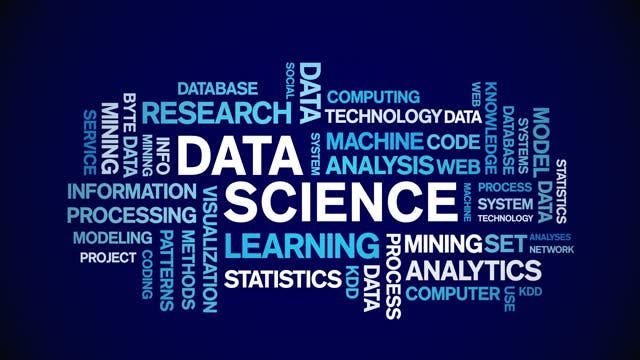Unveiling the Future: Time Series Forecasting

Introduction
In the dynamic landscape of business and economics, the ability to foresee future trends is invaluable. Time Series Forecasting: Predicting the Future with Data empowers organizations to harness the wealth of historical data to anticipate market fluctuations, consumer behavior, and other critical variables. This comprehensive guide delves into the intricacies of Time Series Forecasting, offering insights, strategies, and real-world applications to navigate the path ahead.
Understanding Time Series Forecasting: Predicting the Future with Data
Embark on a journey through the fundamentals of Time Series Forecasting, unraveling its significance and applications in diverse domains.
Deciphering Time Series Data
Time Series data encapsulates a sequence of observations collected over successive intervals of time. From stock prices to weather patterns, this data format captures the evolving nature of phenomena, laying the groundwork for predictive analytics.
Key Components of Time Series Forecasting
Delve into the core components that constitute Time Series Forecasting, including trend analysis, seasonality, and cyclicity. By dissecting these elements, organizations can extract meaningful insights and anticipate future patterns with precision.
Methods and Models
Explore an array of methodologies and models employed in Time Series Forecasting, from traditional approaches like ARIMA (AutoRegressive Integrated Moving Average) to cutting-edge techniques such as machine learning algorithms. Each method offers unique advantages and suitability based on the nature of the data and forecasting objectives.
Empowering Business Insights
Unlock the transformative potential of Time Series Forecasting in driving strategic decision-making and gaining a competitive edge in the market landscape.
Enhancing Market Intelligence
Time Series Forecasting equips businesses with the tools to analyze historical trends, identify emerging patterns, and adapt strategies accordingly. By staying ahead of market fluctuations, organizations can optimize resource allocation, mitigate risks, and seize opportunities proactively.
Optimizing Inventory Management
Efficient inventory management is critical for businesses across industries. Time Series Forecasting enables accurate demand forecasting, minimizing excess inventory, stockouts, and associated costs. By aligning supply with demand dynamics, organizations can streamline operations and enhance customer satisfaction.
Navigating Challenges and Pitfalls
While Time Series Forecasting offers immense potential, navigating its complexities requires a nuanced understanding of challenges and pitfalls.
Data Quality and Preprocessing
The quality of input data significantly influences the accuracy of forecasts. Addressing issues such as missing values, outliers, and data inconsistencies through robust preprocessing techniques is essential to ensure reliable predictions.
Overfitting and Model Selection
Overfitting poses a common challenge in Time Series Forecasting, wherein a model captures noise or random fluctuations in the data, leading to inflated performance metrics. Selecting an appropriate model architecture and employing regularization techniques are vital strategies to combat overfitting and enhance generalization capabilities.
Future Perspectives and Innovations
Charting the course ahead, explore emerging trends and innovations poised to redefine the landscape of Time Series Forecasting.
Integration of Artificial Intelligence
The integration of artificial intelligence, particularly deep learning algorithms, holds promise in enhancing the accuracy and scalability of Time Series Forecasting models. By leveraging neural networks and recurrent architectures, organizations can uncover intricate patterns and glean deeper insights from temporal data.
Advancements in Predictive Analytics
Continual advancements in predictive analytics are expanding the horizons of Time Series Forecasting, enabling real-time forecasting, anomaly detection, and scenario planning. From predictive maintenance in manufacturing to personalized recommendations in e-commerce, the applications are boundless.
Time Series Forecasting: Predicting the Future with Data FAQs
What is Time Series Forecasting?
Time Series Forecasting involves predicting future values based on past observations, leveraging the sequential nature of time-stamped data.
How does Time Series Forecasting benefit businesses?
Time Series Forecasting enables businesses to anticipate market trends, optimize resource allocation, and make informed decisions, thereby enhancing efficiency and competitiveness.
What are some common challenges in Time Series Forecasting?
Common challenges include data quality issues, model selection dilemmas, overfitting, and the dynamic nature of time series data.
Which industries extensively utilize Time Series Forecasting?
Industries ranging from finance and healthcare to retail and energy leverage Time Series Forecasting for demand forecasting, risk management, resource planning, and more.
What role does machine learning play in Time Series Forecasting?
Machine learning algorithms play a pivotal role in Time Series Forecasting by automating model training, capturing complex patterns, and adapting to evolving data dynamics.
How can businesses mitigate the risks associated with Time Series Forecasting?
Businesses can mitigate risks by implementing robust data quality assurance measures, adopting ensemble forecasting techniques, and continuously evaluating and refining forecasting models.
Conclusion
In an era defined by uncertainty and rapid change, Time Series Forecasting emerges as a beacon of clarity, enabling organizations to navigate complexities and embrace opportunities with confidence. By harnessing the power of data-driven insights, businesses can not only predict the future but also shape it to their advantage.
A appealing choice for those who are interested in learning more about the complexities of understanding social data in the context of data science is to investigate the Data Science course in Ahmedabad, Patna, Jaipur, Lucknow, and other regions. This educational project, which is provided by several institutes and universities, functions as a guiding light in addition to being a point of entrance into knowledge. It highlights ethical issues and gives marketers guidance on how to use social media analytics skillfully in the context of data science. People who pursue this educational path become practitioners who see a day when data science-derived insights are both powerful and morally sound.